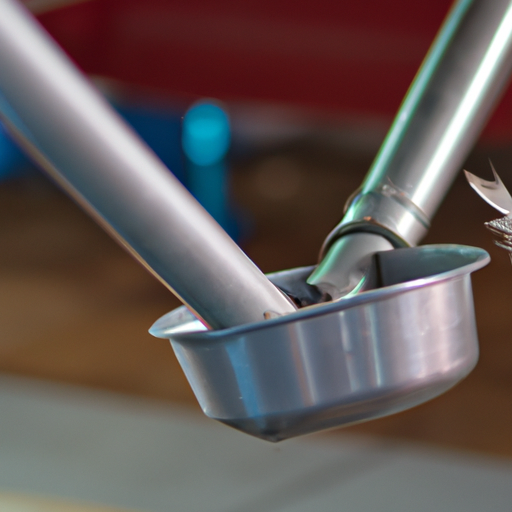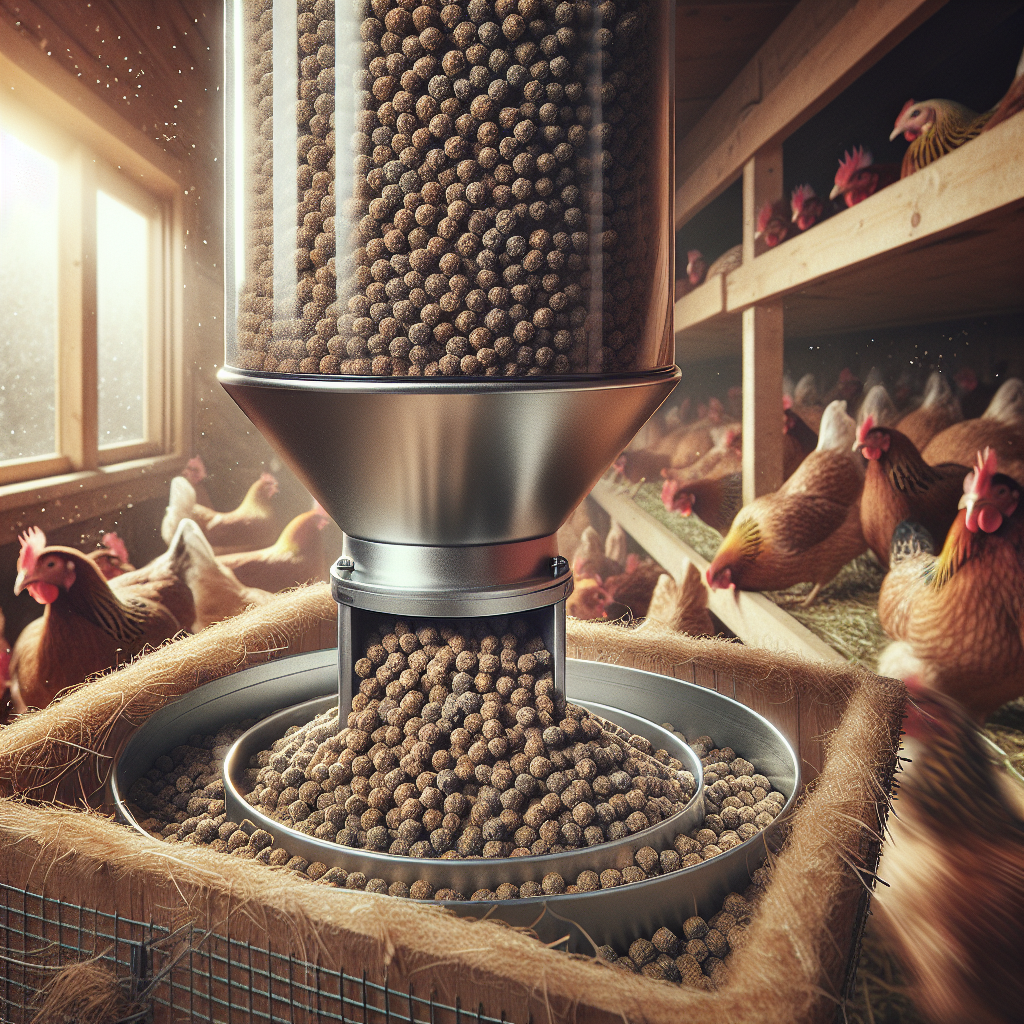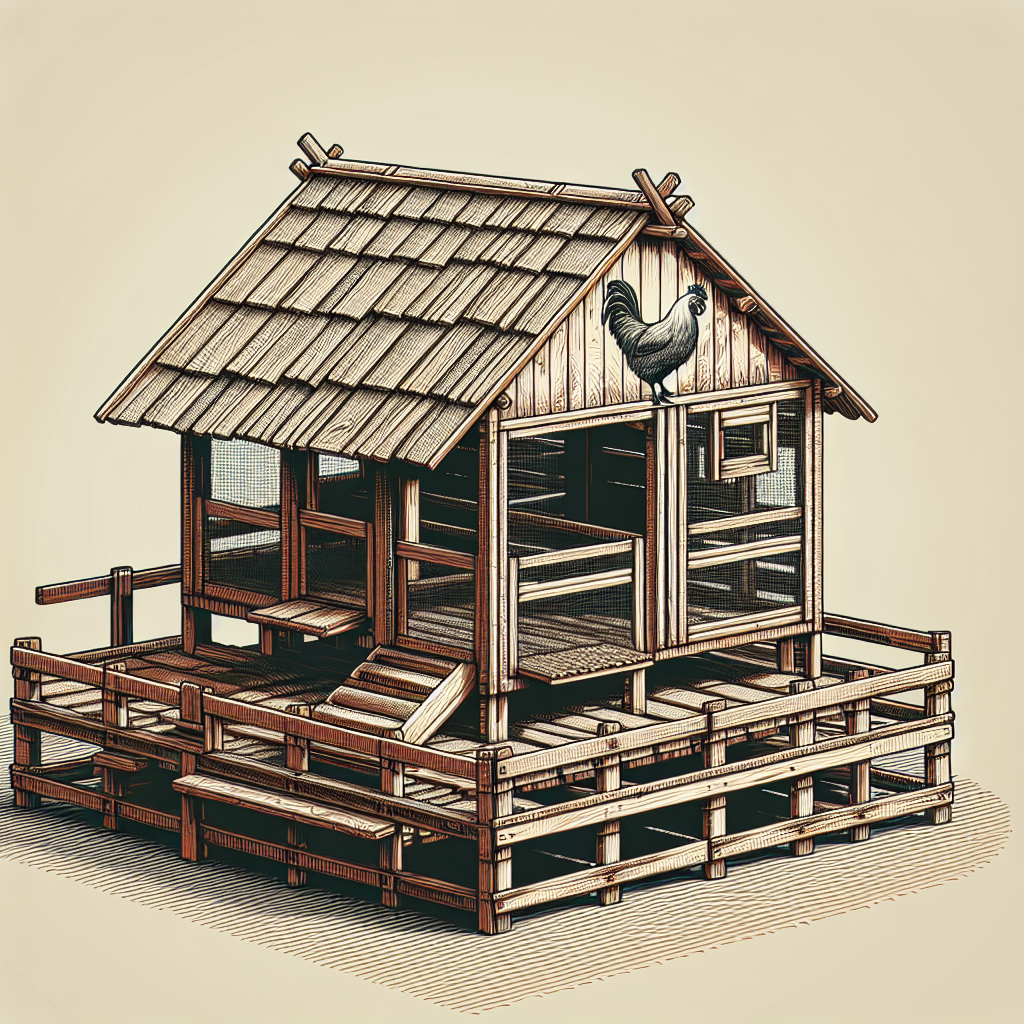Have you ever wondered how the design of chicken coops vary for broilers compared to layers? It’s fascinating to consider the unique needs of each group and how their living space can affect their well-being. In this article, we will explore the differences in coop designs for broilers and layers, discussing factors such as space requirements, ventilation, and environmental control. By understanding these variations, you can ensure that your chickens are housed in an environment that promotes their health and productivity. So, let’s get started and discover the secrets behind designing the perfect coop for your feathered friends!
Coop Designs for Broilers
Purpose of the Coop
When designing a coop for broilers, the primary purpose is to create a comfortable and secure environment that promotes healthy growth and weight gain. The coop should provide enough space for the broilers to move around, access to food and water, proper ventilation to regulate temperature and humidity, and a suitable bedding material to ensure cleanliness.
Spacing Requirements
Broilers require more space than layers due to their rapid growth. The recommended guideline is to provide a minimum of 1 square foot per broiler. This allows them to move around freely and minimizes the risk of injuries or overcrowding. It is essential to consider the broilers’ size at maturity and plan for adequate space accordingly.
Ventilation
Proper ventilation is crucial in broiler coops to maintain optimal air quality. It helps remove excess moisture, ammonia, and other harmful gases produced by the broilers and prevents the build-up of heat. Coops designed for broilers should include windows or vents that can be opened or closed to control airflow. Adequate ventilation helps to regulate temperature and reduce the risk of respiratory issues in the broilers.
Heating and Cooling
Maintaining a suitable temperature is essential for broilers’ comfort and growth. Coop designs for broilers should include measures for heating during colder months and cooling during hot summers. In areas with extreme climates, heating systems such as brooder heaters or heat lamps may be necessary. Similarly, cooling methods like fans or misting systems can help to prevent heat stress in the broilers.
Lighting
Appropriate lighting plays a crucial role in broiler growth and development. Coops designed for broilers should include artificial lighting to provide a consistent photoperiod for optimal growth. Typically, broilers require around 20 hours of light per day during the first week, gradually reducing to 16 hours per day until harvest. Adequate lighting promotes activity and feed consumption, allowing the broilers to reach their full potential.
Feeding and Watering Systems
Efficient feeding and watering systems are vital to ensure broilers have access to a constant supply of food and water. Automatic feeders and waterers are commonly used in broiler coops, providing a steady supply and reducing the workload for caretakers. These systems should be designed to accommodate the number of broilers in the coop and prevent feed wastage and contamination.
Bedding Material
Choosing the right bedding material is essential for broiler coops. The bedding should be absorbent, easy to maintain, and provide cushioning for the broilers’ comfort. Common bedding options for broilers include wood shavings, straw, or sawdust. Regular cleaning and replacing of bedding is necessary to prevent the build-up of ammonia and maintain a clean and healthy environment.
Manure Management
Broilers produce a significant amount of manure, which needs to be managed effectively to maintain cleanliness and prevent odors. Coop designs for broilers should include a designated area for manure removal or a system to collect and compost the manure. Regular cleaning and proper disposal of manure are essential for biosecurity and to prevent the spread of diseases.
Access and Security
Easy access to the coop for caretakers is essential for daily management tasks such as feeding, watering, and cleaning. Coops should be designed to allow convenient entry and exit while ensuring the security of the broilers. Strong and secure doors, windows with screens, and fencing can help protect the broilers from predators and ensure their safety.
Construction Materials and Design
When constructing a coop for broilers, it is important to use durable and easy-to-clean materials. Coops are typically made of wood or metal, with a design that allows for efficient cleaning and disinfection. Adequate insulation and proper sealing are also important to maintain stable temperatures and prevent drafts or moisture build-up.
Coop Designs for Layers
Purpose of the Coop
The purpose of a layer coop is to provide a comfortable and safe environment that facilitates egg production. Coops for layers should prioritize nesting boxes for egg-laying, perches for roosting, and efficient feeding and watering systems. These design elements help to promote healthy laying behavior and ensure the well-being of the layers.
Spacing Requirements
Layers require less space compared to broilers as their primary activity is egg-laying. The recommended guideline is to provide a minimum of 1.5-2 square feet per layer. This allows them to move comfortably and prevents overcrowding, which could lead to stress and reduced egg production. Providing adequate spacing is essential for maintaining the health and productivity of the layers.
Ventilation
Proper ventilation is crucial in layer coops to maintain fresh air and minimize odors. Good air quality helps prevent respiratory issues and promotes optimal egg production. The coop should have windows or vents that allow for airflow while protecting the layers from drafts. Ventilation systems should be designed to provide adequate exchange of air while maintaining stable temperature and humidity levels.
Heating and Cooling
Layers are less sensitive to temperature changes compared to broilers, but still, require a comfortable environment for optimal egg production. Coop designs for layers should consider heating during colder months and cooling during hot summers. Heating can be achieved using various methods such as radiant heaters or heating pads, while cooling can be provided through fans or misting systems.
Lighting
Lighting plays a crucial role in the egg-laying behavior of layers. Coop designs for layers should incorporate artificial lighting to provide consistent photoperiods, simulating natural daylight patterns. Typically, layers require around 14-16 hours of light per day to maintain regular egg production. Proper lighting systems help to regulate their biological clock and optimize egg-laying.
Nesting Boxes
Nesting boxes are essential in layer coops to provide a secluded and comfortable area for the layers to lay their eggs. The number of nesting boxes should be sufficient, typically one for every four to five layers, and they should be lined with clean nesting material such as straw or wood shavings. Well-designed nesting boxes promote proper egg-laying behavior and help prevent egg breakage.
Perches
Perches are important features in layer coops, as they provide the layers with an elevated area to rest and roost. Coop designs should include perches that are spaced adequately to prevent overcrowding and allow easy movement for the layers. Perches should be made of smooth materials to prevent injuries and should be easily accessible for cleaning.
Feeding and Watering Systems
Efficient feeding and watering systems are crucial for supplying layers with a balanced diet and sufficient water for egg production. Coops should be equipped with automatic feeders and waterers that can accommodate the number of layers present. These systems should prevent feed wastage, contamination, and allow easy access for cleaning and refilling.
Bedding Material
The choice of bedding material in layer coops is vital for maintaining cleanliness and preventing the occurrence of dirty or cracked eggs. Common bedding options include straw or wood shavings, which provide insulation and absorb moisture. Regular cleaning and replenishment of bedding are necessary to create a hygienic environment and minimize the risk of health issues.
Manure Management
Layer coops also produce a significant amount of manure, which needs to be managed properly to maintain a clean and healthy environment. Coop designs should include a manure removal system or a designated composting area. Regularly removing manure and implementing proper disposal practices help prevent the spread of disease, reduce odors, and maintain biosecurity.
In conclusion, coop designs for broilers and layers differ in several aspects to cater to their specific needs. Understanding the purpose, spacing requirements, ventilation, heating and cooling, lighting, feeding and watering systems, bedding material, manure management, access and security, as well as construction materials and design for each type of coop is crucial in providing a comfortable and conducive environment for the broilers’ growth and the layers’ egg production. By considering these factors, coop owners can ensure the well-being and optimal performance of their poultry.




